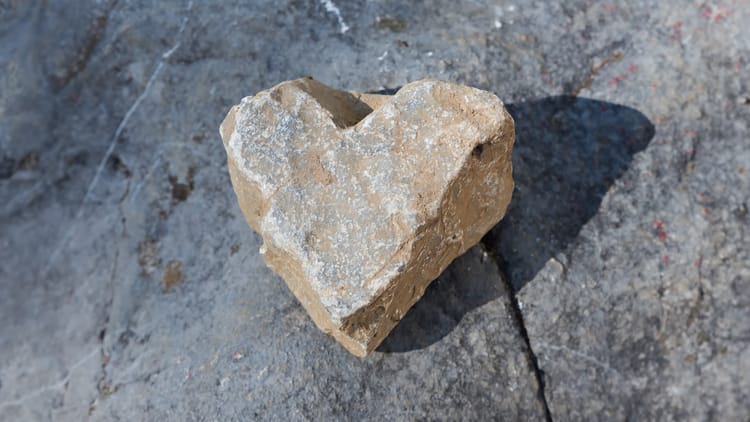When God Will Live Among Us (Ezekiel 43:1-12)

Big Idea: God will restore the world, and the center of this new creation will be God living with us, and this should change how we live.
When you write a book that tells a story, there’s a formula you’re supposed to follow.
First, you set the scene. You introduce the characters and the setting in a way that you begin to care about the characters.
Then you introduce the conflict. No great story can exist without some form of conflict. You need the characters to get into some kind of trouble. For a good part of the story, you aren’t sure how the characters are ever going to get out of that trouble, but you want them to somehow triumph over their problems. When a story is good, that tension keeps you gripped while you figure out what’s going to happen.
Then you have the climactic scene. Everything is on the line. It’s tense. But, in the end, the characters triumph over the problems. In a good story, the characters are transformed. They’re not the same people they were at the start of the story. They’re changed for the better.
Then you have the happily ever after. The characters have faced the conflict and triumphed, and now they’re in good shape, and the story wraps up the loose ends and leaves you with a good feeling.
That’s the shape of a good story. It’s the pattern that all the good stories follow. The important thing is that you can’t look like you’re following a formula, but generally, that’s exactly what every story does.
So what’s wrong with Ezekiel?
This year we’re going through the entire Bible as a church. We’re looking at passages that usually don’t get preached. Right now we’re right at the darkest period of the Old Testament. God is about to send Israel into exile. Along comes this guy called Ezekiel right before the exile begins. He warns Israel and gives them hope that restoration will one day happen.
Ezekiel is a fascinating book. It’s puzzling. It’s gripping. It’s a little trippy at times. The one thing that it isn’t is boring. He gives object lessons. He lies on his left side for 390 days to symbolize how many years God’s people will be punished. He cuts his hair and burns part of it. He has all these weird prophecies. The one thing that he isn’t is boring. For a good part of the book, Ezekiel may be challenging, but also fascinating.
And then you get to the end. At first glance, the end of the book is disappointing. The buildup is great. You’ve got a valley of dry bones that comes to life again in chapter 37, symbolizing the rebirth of the nation of Israel. You’ve also got an apocalyptic battle in chapters 38 and 39 that one commentator (Iain Duguid) says is “worthy of the climax to an action-thriller movie of the Die Hard genre.” And then things come to a screeching and head-scratching halt.
In chapters 40 to 48 you have architectural specifications. You’ve got these very detailed descriptions of the dimensions of the new Temple. Let me give you a sample:
Then he measured the width of the opening of the gateway, ten cubits; and the length of the gateway, thirteen cubits. There was a barrier before the side rooms, one cubit on either side. And the side rooms were six cubits on either side. (Ezekiel 40:11-12)
It goes on like that for a number of chapters. You’ve got to be kidding, right? But that’s not all. You’ve also got descriptions of what kind of sacrifices the prince may offer. Example:
This is the offering that you shall make: one sixth of an ephah from each homer of wheat, and one sixth of an ephah from each homer of barley, and as the fixed portion of oil, measured in baths, one tenth of a bath from each cor (the cor, like the homer, contains ten baths). (Ezekiel 45:13-14)
You might wonder why Ezekiel finishes the book in a seemingly boring way after writing one of the most fascinating books in the entire Bible. He's like that dull person you know who enjoys telling you incredibly dull facts, such as the emission numbers of a 1988 Chrysler Fifth Avenue compared to a Toyota Tercel. You’re glad they’re having fun, but you want out of the conversation.
One thing I’ve found in studying the Bible over the years is that sometimes the seemingly boring parts are actually some of the important parts. The parts that make you scratch your head, the parts that we’re tempted to skip over, actually have something important to say.
Today’s passage is a case in point. In the middle of the seemingly boring end of the book of Ezekiel, Ezekiel communicates a message to us. And it’s one we need to hear.
Here is the essence of the message.
God Will Restore the World
Where did I get this from?
If you read chapters 40 to 48, you discover that Ezekiel’s vision is about nothing less than the reordering of the entire world. It begins with the recreation of his people in chapter 37. But then you get this description of a renewed creation, of a heaven-on-earth place. It’s like if you took the Garden of Eden — the paradise of Genesis 2, before sin entered the world — and combined it with a new Temple. It’s not an earthy Temple. It’s not Solomon’s Temple or the second Temple of Jesus’ day. It’s a heavenly ideal that will become the new reality as God renews and restores the world.
Remember the purpose of the Temple? The Temple is where God lives on earth. That’s why it was so important in Israel’s history. The Temple is where God lived with his people. So when Ezekiel gives this picture of this heavenly Temple, he’s saying that God will once again live with his people. Unlike the Temple of Ezekiels day, this will be a purified Temple with a restored priesthood that can worship God faithfully.
At the center of this restored creation will be God’s holy people. In the Temple of Ezekiel’s day, walls surrounded the Temple to keep the people out. In the vision that Ezekiel has, the walls are there to keep people in, close to the presence of God. This is an amazing picture.
You see echoes of this vision in Revelation too:
And I saw the holy city, new Jerusalem, coming down out of heaven from God, prepared as a bride adorned for her husband. And I heard a loud voice from the throne saying, “Behold, the dwelling place of God is with man. He will dwell with them, and they will be his people, and God himself will be with them as their God. (Revelation 21:2-3)
What is the future of the world? God is going to restore it to what it should be. Our ultimate future is not heaven. Our ultimate future is a restored earth. As Mike Wittmer says, “We don’t hope merely for the day when we go to live with God, but ultimately for that final day when God comes to live with us.”
We sometimes sing a song called “Is He Worthy?” It includes these words:
Do you feel the world is broken? (We do)
Do you feel the shadows deepen? (We do)...
Do you wish that you could see it, all made new? (We do)
We have this longing for the world to be made right, for the world to be the way that it should be. Ezekiel tells us: God will restore the world. It will be the way that we long for it to be. A new heaven and a new earth will replace the old heaven and earth. God will make all things right. That is our hope. It’s what we can look forward to experiencing one day.
That is why the end of Ezekiel isn’t boring at all. It’s describing what we long to experience. God will restore the world. But that’s not all.
The Highlight of This New Creation Will Be God Living With Us
Ezekiel 43 gives us an amazing picture.
If you were here last week, you may remember the horrible vision that Ezekiel described earlier: God left the Temple. This is what led to all the other problems that happened. God had enough of his people. He left his dwelling place among them. He did so slowly, but he left.
In chapter 43, the reverse happens. And it doesn’t happen slowly; it happens quickly.
As the glory of the LORD entered the temple by the gate facing east, the Spirit lifted me up and brought me into the inner court; and behold, the glory of the LORD filled the temple. (Ezekiel 43:4-5)
God is back. He’s reclaiming his creation. That’s the highlight of this new restored creation. God is back, and this time for good.
How do we know this? Because God says so.
While the man was standing beside me, I heard one speaking to me out of the temple, and he said to me, “Son of man, this is the place of my throne and the place of the soles of my feet, where I will dwell in the midst of the people of Israel forever. And the house of Israel shall no more defile my holy name... (Ezekiel 43:6-7)
The best part of this new creation is not just that the world is restored. It’s that God is there. The whole point — the longing of our souls — is God.
I love how John Piper puts it:
The critical question for our generation — and for every generation — is this: If you could have heaven, with no sickness, and with all the friends you ever had on earth, and all the food you ever liked, and all the leisure activities you ever enjoyed, and all the natural beauties you ever saw, all the physical pleasures you ever tasted, and no human conflict or any natural disasters, could you be satisfied with heaven, if Christ were not there?
The answer has to be no. Heaven without Jesus isn’t heaven at all.
The whole point of this restoration, the whole point of the gospel, is giving us God himself. It’s why Jesus came. It’s why God will remake the world. Piper continues:
The glorious excellencies and beauty of God will be what will forever entertain the minds of the saints, and the love of God will be their everlasting feast. The redeemed will indeed enjoy other things; they will enjoy the angels, and will enjoy one another: but that which they shall enjoy in the angels, or each other, or in anything else whatsoever, that will yield them delight and happiness, will be what will be seen of God in them.
God will restore the world, and the highlight of this restored world will be God living with us.
But Ezekiel gives us one more message.
This Should Change How We Live
Look at verses 10-12:
As for you, son of man, describe to the house of Israel the temple, that they may be ashamed of their iniquities; and they shall measure the plan. And if they are ashamed of all that they have done, make known to them the design of the temple, its arrangement, its exits and its entrances, that is, its whole design; and make known to them as well all its statutes and its whole design and all its laws, and write it down in their sight, so that they may observe all its laws and all its statutes and carry them out. This is the law of the temple: the whole territory on the top of the mountain all around shall be most holy. Behold, this is the law of the temple. (Ezekiel 43:10-12)
What is the point of this vision? The point of the vision isn’t that we make charts about end-time prophesies. It’s not that we geek out on biblical interpretation, as good as that might be. The point is that we turn from our sins to God, that we treasure him, that we seek God because this new creation is coming.
That’s the point of the gospel. It’s why Jesus died to make us new and to give us this hope. God will restore the world, and the center of this new creation will be God living with us, and this should change how we live. This is the highlight of what God will do. This is our hope.
Lord, give us this hope. We long for the coming of Jesus. May this change how we live. In Jesus’ name. Amen.




